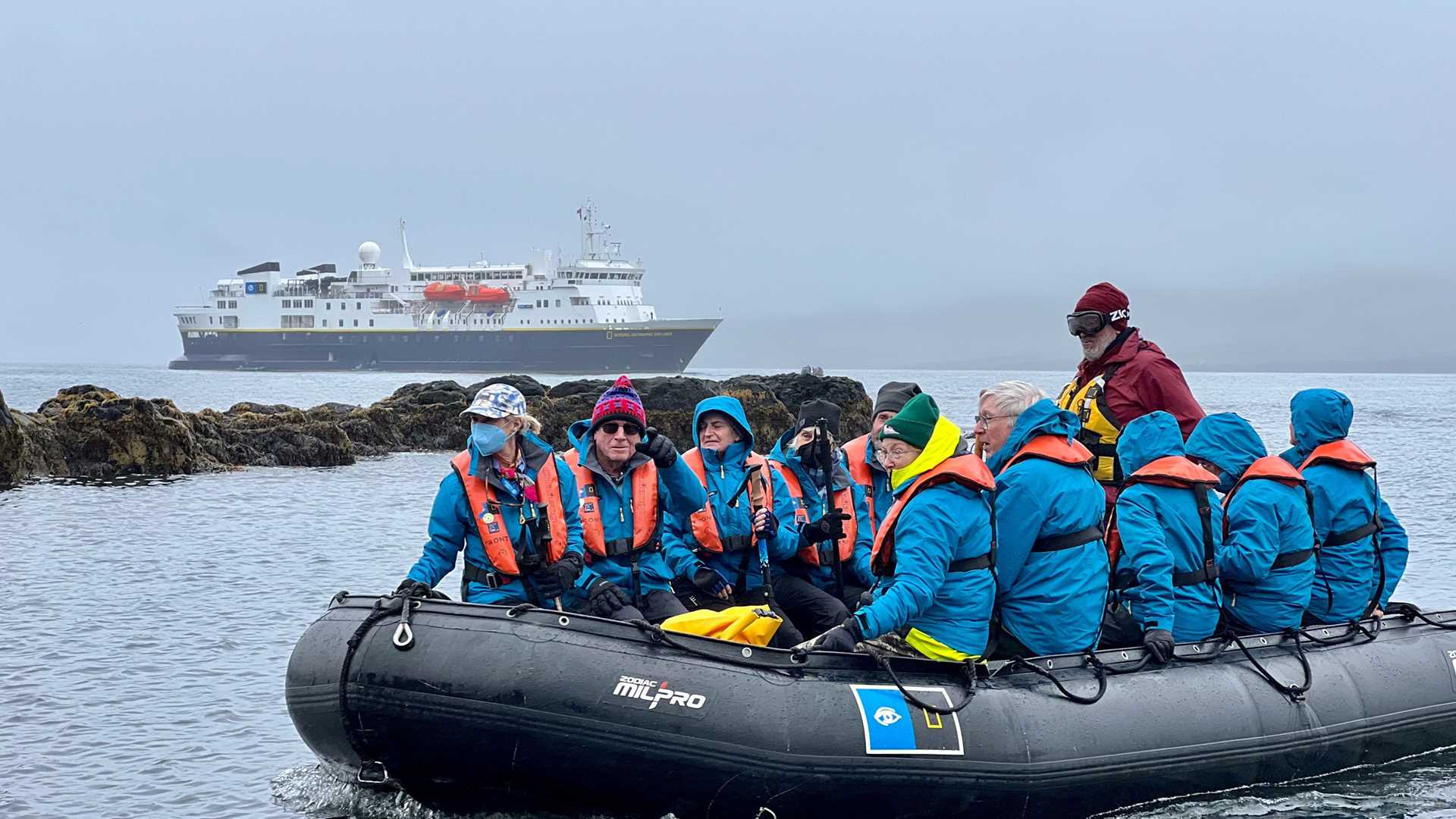We awoke from yesterday’s short-lived-but-officially-polar-adventures at Grimsey to a grim sea of our own, blanketed in misty fog flowing along Iceland’s eastern shores on our way to the storied fjord of Seyðisfjörður. After an educational breakfast and presentations on the wonders of whales by naturalist Kelly and the gallantry of glaciers by expedition leader (and crazed ice cave spelunker) Andreas, we were greeted by the otherworldly scenery of Skálanes. This 1250-hectare, independent natural preserve with its tall cliffs of layered volcanic rock soaring above seabird colonies and diverse plant communities is a working laboratory that helps us understand what “natural” means for Iceland after a millennium of human survival reinterpreting its living landscape.
Guided by reserve managers and researchers Óli Pétursson and Rannveig Þorhallsdottir, we ventured through the former pastures and eroded structures—now overtaken by arctic thyme and introduced Alaskan lupine—that supported Icelanders living on this wind-cut edge of the world since the first millennium. As we walked, Oli discussed the need to complicate our ecological thinking when confronted with the errors of land management past, and take a, “Well, we might as well figure out what’s going on,” approach instead of arguing over concepts that exist outside of the existing reality in the soil. He showed us burgeoning birch trees that will someday create a forested Iceland again, a positive for the once extirpated trees and a negative for the many birds that grew quite used to the anthropogenic fields they’ve come to enjoy since the last Viking fires went out.
He showed us modern, fast-paced erosion of the pastures that the lupines are meant to fix along with 12,000-year-old glacier-ground gravel as we walked over the remains of huts that would have housed Oli’s grandparents’ generation. We arrived at Rannveig’s dig sites, where she showed us the lived-in-and-on remains of a longhouse occupied since at least 1300, maybe 900 AD. A likely gravesite from the year 1000 was just beyond, and she described how Icelanders still don’t have the full picture of their ancestor’s arrival and settlement of their land. Reykjavik gets to claim many archaeological firsts for Iceland, she mentioned, since there is a city there. People dig all the time and find what was left behind. Here in Skálanes, on the coast most-facing Europe and its seafarers, we don’t know much because we haven’t looked. Those efforts are ultimately undertaken by just Oli and Rannveig. Supported in their work by our visit and patronage, they are slowly uncovering the secrets of the past to help us divine one of the many possible futures for the inhabitants of the land of ice and fire.




